Written by Guest Contributor on The Prepper Journal.
Editors Note: Another guest contribution from Kevin Fleeman at LifeUnderSky.com to The Prepper Journal. As always, if you have information for Preppers that you would like to share and possibly receive a $25 cash award as well as be entered into the Prepper Writing Contest with a chance to win one of three Amazon Gift Cards with the top prize being a $300 card to purchase your own prepping supplies, enter today.
Fit, form, function sprinkled generously with a little experience!
Before setting out to buy a hunting knife, there is a lot of information that you need to gather. I know hunting knives tend to look the same, but don’t let this be the basis of your selection, especially if it is your first, as you will most likely make a mistake. With hunting knives, there’s more than meets the eye.
First of all, the variety of knives available in the market can definitely leave you a bit confused. This is why you need to know what you are looking for in a hunting knife.
To further emphasize on the difference of hunting knives, there is a huge range when it comes to prices. Anywhere from $50 to over $900. That being the reality let us consider some of the things you need to keep in mind when choosing the right type of hunting knife for you.
Uses of A Hunting Knife
The main reason why hunters carry hunting knives is to cut the prey up into manageable sizes for transporting back to the cabin, or base. This includes skinning and cutting through cartilage as well as bone.
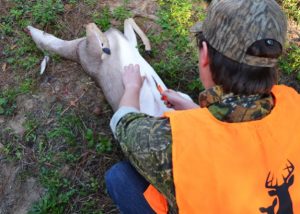
To be able to perform its required task, the hunting knife thus needs to be both sturdy and sharp. A lot of fisherman live and die by their fillet knives and while one might work in some cases, it won’t as an effective hunting knife. And let me bring home the point that having a knife we ONLY use to field dress game is okay, even for those people who abhor carrying a tool that can only serve a single purpose. A hunting knife must be sharp, comfortable to handle and easy to use as, in some cases, your time to dress a fresh kill may be somewhat “constrained” if large bears also occupy the area, as they can smell a kill up to 20 miles away downwind. Using it to cut tree branches to form a lean-to, chop wood into kindling, open canned foods etc. are tempting, but will have you spending a lot of time with your sharpening stone. Single use has it’s good points in this situation.
Size of the Animal
This definitely forms the basis of selecting the size of the hunting knife. If you are a hunter who goes after deer, you will need a bigger knife than a hunter who goes after rabbits.
Using a big knife on small prey increases your risk of injury as you could easily cut yourself. Likewise, using a small knife on big prey is inefficient. You will not be able to cut through bone and it will take a long time to get things done, and, as noted above, you may not be in control of how much time you have, or even aware of it.
Hunting Knife Types
The right type of hunting knife is also determined by how often you go out to hunt. Regular hunters need something sturdy and the best choice is a fixed blade.
If you are an occasional hunter, this means you will not need to use the knife often. A folding knife will serve you just fine.
Fixed blade knives tend to be more popular among hunters with good reason. They are large, strong such that they don’t bend and they tend to be more reliable than folding blades. Folding knives however, are simple to carry.
The folding knife is normally not as durable as a fixed blade knife. So how can you get around this if you still prefer to carry just one? Well, first, ensure that you avoid cheap blades. Also pick a reputable manufacturer. The folding mechanism is of paramount importance as this is where most folding knives tend to have issues, and the issues could be life-changing. Sometimes going from 10 of something to nine of that something really is a BIG deal. The knife should also have a thick blade.
Blade Types
When talking about the blade, they come in three varieties. The skinning blade, drop pointed and clip pointed blades.
Skinning blades are simply for that, skinning the animal. They are excellent for this and poor for the other functions of dressing out a kill (cutting meat, cartridge or bone.) People who carry these for just this purpose usually also pack in Grey Poupon! This is a purely a matter of personal preference through experience.
Drop-point blades feature a back that gradually slopes the further you move to the tip. They have the benefit of preventing the user from puncturing organs while slicing. Another advantage is that they provide greater surface area for cutting. The downside is that drop-point knives do not have a very sharp tip compared to other types of blades.
Clip-point blades have a special design that provides for a sharp tip. They generally have a straight spine that runs all the way to the middle, then slopes and curves to the tip. The slicing part is long making the clip-point knife ideal for taking the skin off the animal.
Picking the most suitable blade really depends on the individual hunter. Clip point hunting knives however are the most popular thanks to their versatility. They can be used for all the functions of dressing out an animal.
With this information you are well on your way to making the right decision when buying a hunting knife. Let’s now look at the qualities of a good hunting knife.
Features of a Good Hunting Knife
As we have seen there are many factors to consider when selecting the right type of hunting knife. Now we wish to go deeper into the construction of the hunting knife and see what makes the best blade from the inside out.
Full Tang Construction
This means that the entire length of the blade is made up of one single piece of metal. The advantage to this type of design is the sturdiness that comes with it. It makes it hard to bend or break the knife. Some knives come with a partial tang design. These will not provide the service you need as they are more prone to breaking.
Type of Material
There are three main types of materials used in the construction of hunting knives – stainless steel, carbon steel and carbon stainless steel.
Carbon steel is the cheapest type of hunting knife, it is easy to sharpen but the downside is that it can rust when exposed to the elements. Stainless steel is a bit harder to sharpen. However, once sharpened, it does not need regular attention. Just sheath it for the next time you need to use it. To provide the benefits of both types of materials, carbon stainless steel will offer hybrid features.
No one should eat meat this knife has dressed, EVER!
Some hunters will opt for the carbon steel blade. If you do, to prevent the knife from rusting, a good option is to apply a silicon based special wax, or coating. This is not a bad option for any blade that will not be in constant use, or used on food being prepared right now. The coating wipes off on any absorbent cloth.
The Handle
A good hunting knife needs to have a strong handle that is comfortable on your hand. It is easy to go for certain materials such as wood or leather, but these are not very weather resistant. A handle made out of bone might be pleasant to look at but could break easily. The best materials are synthetic or a hard rubber.
It’s important to carry out measures to ensure that your hunting knife is in the best condition for use. Once you are done dressing a kill, clean the blade and handle and wipe it dry. In case your knife is made of carbon steel, remember to apply a silicon wax. This will prevent it from rusting.
A final note, stainless steel knives are not 100% resistant to rust. They are just better than carbon steel.
The post What Makes a Good Hunting Knife? appeared first on The Prepper Journal.
from The Prepper Journal
Don't forget to visit the store and pick up some gear at The COR Outfitters. How prepared are you for emergencies?
#SurvivalFirestarter #SurvivalBugOutBackpack #PrepperSurvivalPack #SHTFGear #SHTFBag

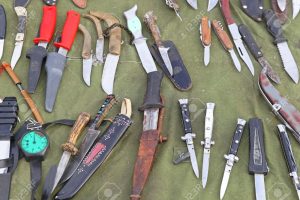

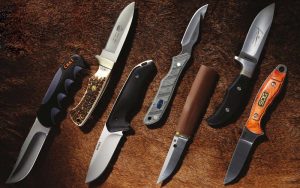
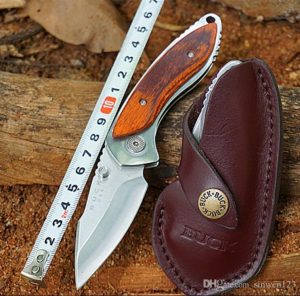
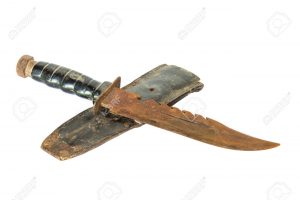
nice post thanks for write. i am waiting for your next post. see the link
ReplyDelete